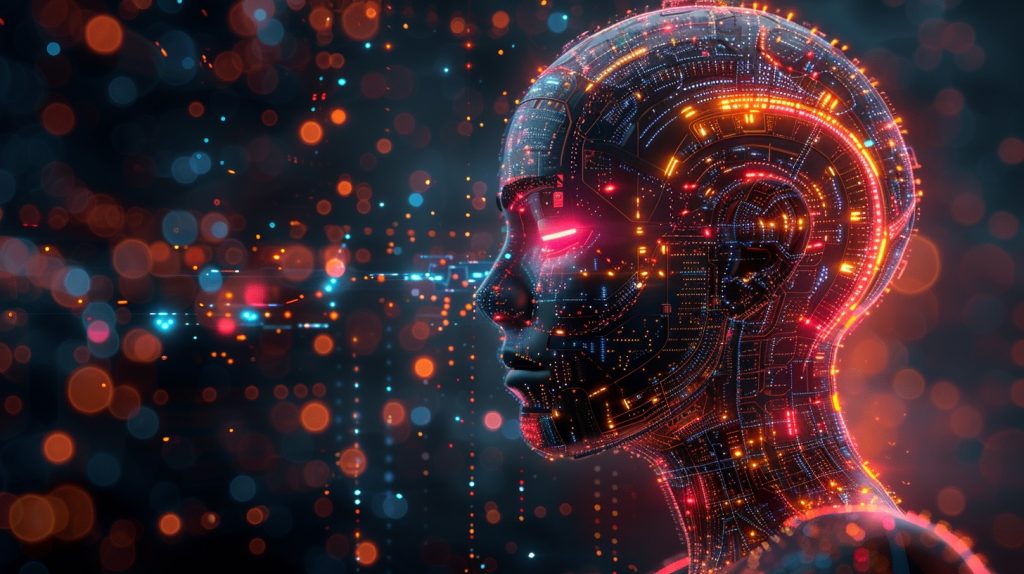Deep learning, a subset of machine learning, uses multi-layered neural networks to mimic human decision-making. Unlike traditional machine learning, which relies on simple networks, deep learning models process data through multiple layers, enabling them to analyze unstructured data and improve over time. This technology powers many AI applications, from digital assistants and self-driving cars to fraud detection and generative AI tools, driving advancements in automation and data science.
How deep learning works
Deep learning uses neural networks to mimic the human brain, processing data through layers to make accurate predictions. It relies on forward propagation to process inputs and backpropagation to adjust errors and improve accuracy. This process requires significant computational power, often utilizing GPUs or cloud computing for efficiency. Popular frameworks like JAX, PyTorch, and TensorFlow are commonly used to build and train deep learning models.
Types of deep learning models
This text explores six key types of deep learning models, highlighting their uses, strengths, and challenges:
- Convolutional neural networks (CNNs): Ideal for image recognition and computer vision tasks, automating feature extraction but computationally intensive.
- Recurrent Neural Networks (RNNs): Handle sequential data like language and time-series but face scalability and training challenges.
- Autoencoders & variational autoencoders (VAEs): Used for data compression, anomaly detection, and generative AI, though resource-intensive.
- Generative adversarial networks (GANs): Generate realistic synthetic data but require large datasets and face issues like mode collapse.
- Diffusion models: Create high-quality data with precision but are computationally demanding.
- Transformer models: Revolutionized NLP with efficient processing and versatility but demand high-quality data and computational power.

Each model addresses specific problems, showcasing the evolution of deep learning.
Applications of deep learning
Deep learning is changing the game across industries, unlocking exciting new possibilities every day. Here are some key ways it’s helping businesses work smarter and deliver better experiences for their customers.
Application modernization
Generative AI is shaking things up in software development and IT automation. By using large language models (LLMs) and natural language processing (NLP), developers can simply type plain text prompts to generate code, automate repetitive tasks, and even modernize outdated systems like translating COBOL to Java. This tech speeds up the development process and helps tackle skill shortages in the industry.
Computer vision
Computer vision, a branch of AI, lets machines “see” and understand visual data. It goes beyond basic recognition to analyze and act on insights. With machine learning and neural networks, it’s used in industries like manufacturing, healthcare, automotive, and retail for tasks like quality control, medical imaging, safety features, and personalized shopping. Trained on massive amounts of data, computer vision systems get smarter over time, making them a powerful tool for improving operations and decision-making.
Customer care
AI is helping businesses meet customer needs in smarter ways, offering personalized shopping, better customer care, and smoother operations. Generative AI uses customer insights to fine-tune products, boost satisfaction, and drive sales. It’s also enhancing customer service with sentiment analysis and personalized experiences, giving companies an edge in today’s competitive market.
Digital labor
Combining robotic process automation (RPA) with digital labor is boosting productivity by blending human efforts with automation. Digital labor, powered by advanced AI models, automates tasks, simplifies workflows, and makes knowledge workers more efficient — all without requiring technical expertise. Think tools like no-code digital assistants for app development or LLM-based models for organizing data that cut down on manual work and save time.
Generative AI

Generative AI, or “gen AI,” uses deep learning to create all sorts of content — text, images, videos, and more — based on user prompts. It thrives on unstructured data, like emails or social media posts, to improve workflows in industries like customer service, marketing, and research. While it’s great for saving time and automating tasks, it also raises ethical questions. Businesses are exploring how to leverage its benefits while keeping potential risks in check.
Natural language processing and speech recognition
Natural Language Processing (NLP) helps computers understand and generate human language using machine learning, deep learning, and computational linguistics. It powers tools like language translation, speech recognition, sentiment analysis, and content creation. Statistical NLP uses algorithms to classify and analyze text and voice data, while speech recognition turns spoken language into text (different from identifying someone by their voice). Modern NLP systems keep getting better by processing tons of data, leading to more accurate results.

